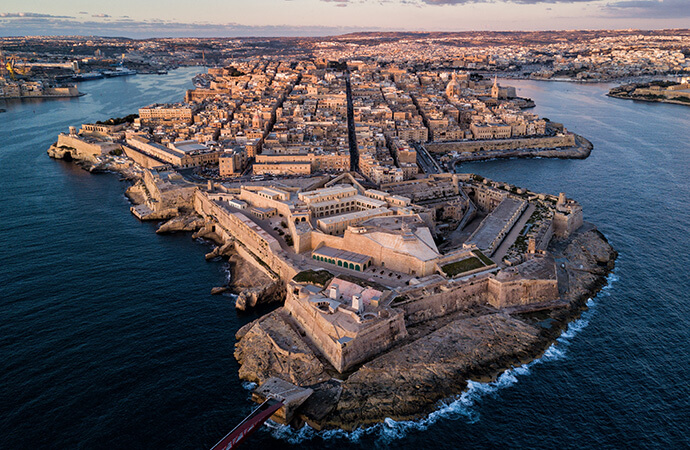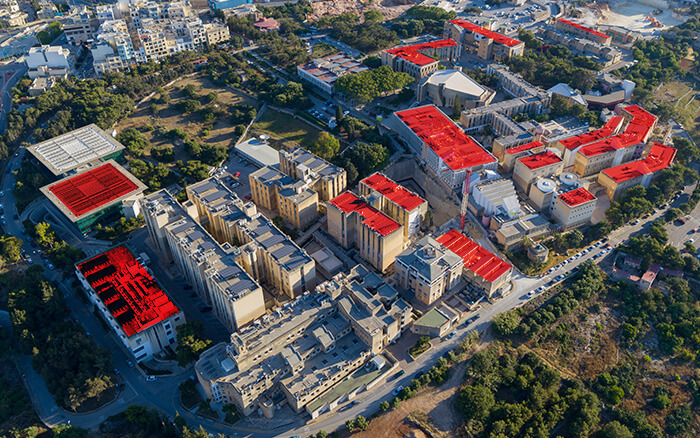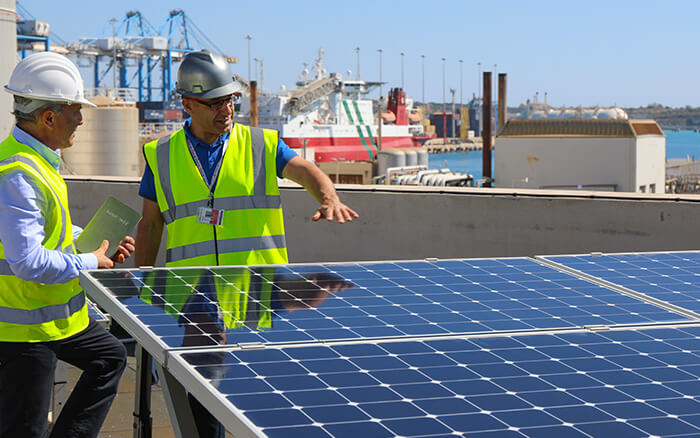Malta: Where history meets progress

Malta may be officially the smallest country in the European Union, but the republic has great ambitions when it comes to solar energy. Meeting the EU’s aggressive targets for renewables is only one of the reasons solar is on the rise in this island nation.
An archipelago situated between North Africa and Sicily, the Maltese Islands have served as a Mediterranean crossroads since the earliest civilizations. Today, Malta has the highest population density in the EU, and its energy needs are rising every year. Its total reliance on energy imports and ample sunshine make it an ideal setting for solar energy – but also one of the most challenging in terms of the elements.
With 300 days of sunshine per year, high dust and salinity from the surrounding seas and strong winds, Malta puts any solar panel to the test. In such a climate, solar panels with proven durability and resistance to temperature fluctuations are best for optimising production.
SunPower installations in Malta have surged. Malta has become the #4 per capita solar market in the EU1 Source: EUROBSERV’ER – April 2019 , and has grown more than 8x since 20122 Source: Wood Mackenzie, Global Solar Outlook, 2019 . The rapid growth is helping Malta achieve its goal of 10% renewable energy by 2020, and also creating a highly competitive solar market.
SunPower partner Alternative Technologies has become a renewable energy leader in the Maltese Islands, installing SunPower systems for a wide range of customers seeking the highest quality solar for their homes, businesses and government buildings. The latest SunPower installations include the Maltese Parliament, the University of Malta, the MUZA Museum of Art and Oiltanking Malta LTD’s business on the country’s pristine coastline.

Despite its sunny conditions and positive incentives, there are challenges to installing solar in Malta.
The islands’ historic sites date back to 5900 BC, and even today the country’s largest city, Valletta, has some of the oldest free-standing buildings in the world. In recommending solar technology for a city that’s also designated a World Heritage Site, Mario’s team knew they needed an aesthetically pleasing, extremely reliable solution.
“Solar energy is a long-term investment and we want to provide a solution that even under these harsh conditions can withstand the test of time,” Mario notes.
The team recommended SunPower for its durability, energy efficiency, and its performance at higher temperatures. The customers agreed.
“Our choice of SunPower panels arises from the fact that we have limited space available across our buildings, and therefore we wanted to maximise the energy generation in that space,” said Joseph Micallef, professor at the University of Malta, who served as project manager on the university’s 11 solar projects, shown below. “It was also very important that we choose solar panels with a low temperature coefficient since we have very high temperatures 6 months of the year.”

The University of Malta installed nearly 2,000 SunPower solar panels (602kW) on 11 buildings.
A high-efficiency SunPower panel addresses both the temperature fluctuations and the space constraints so common across European cities, because a smaller number of panels can be installed and deliver more energy than conventional panels.
“Apart from trying to reach a high power per square metre on the limited rooftops we also had to work in an environment that had a lot of moving shadows across the roofs as well as very close proximity to the sea,” Mario notes.
SunPower’s sleek design and high reliability are well-suited to the needs of Malta, where solar holds much promise for the islands’ future.
“Renewable energy is important to Malta because it helps people become energy independent and lead a more sustainable way of life,” Mario concludes.

Mario Cachia of Alternative Technologies reviews SunPower system with customer.